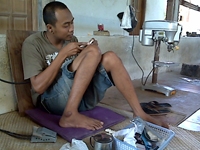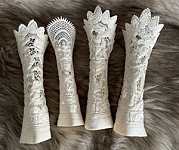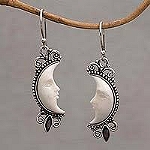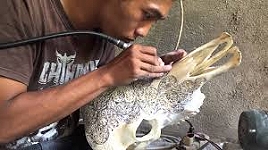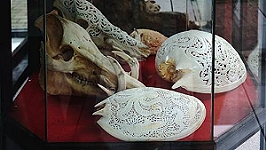Bone Carvings: Difference between revisions
(Created page with "My name is Manuel and I am studying Directing and Neuroscience at St Levan / Great Britain.<br><br>Also visit my web-site Kometa web casino ([https://game-ss.ru/ game-ss.ru]) ") |
(Created page with "My name is Manuel and I am studying Directing and Neuroscience at St Levan / Great Britain.<br><br>Also visit my web-site Kometa web casino ([https://game-ss.ru/ game-ss.ru]) ") |
||
| Line 8: | Line 8: | ||
---- | ---- | ||
[[ | [[File:Balinese bone carver 01.jpg|left]] [[File:Balinese bone carving 02.jpg]] [[File:Balinese bone carving 03.jpg]] | ||
'''Tampaksiring: The Bali Bone Carving Crafts Palace'''<br> | '''Tampaksiring: The Bali Bone Carving Crafts Palace'''<br> | ||
Besides wood, notably Bali has a bone carving and clam carving area, which is quite well known, namely Tampaksiring village, Gianyar, Bali. Already more than half a century bone carving craft in Tampaksiring occupied by people from generation to generation, so that the art is developing well. Generally, since small children in this village began learning to carve the bone. | Besides wood, notably Bali has a bone carving and clam carving area, which is quite well known, namely Tampaksiring village, Gianyar, Bali. Already more than half a century bone carving craft in Tampaksiring occupied by people from generation to generation, so that the art is developing well. Generally, since small children in this village began learning to carve the bone. | ||
The material used is very diverse, ranging from horns or ox bones, buffalo, fish bones, deer antlers, ivory elephants or mammoths, and shells. The artisans chose the cow and buffalo bones as the main ingredient because it has a large size, while for the fishbone, craftsmen select specific types of fish which has a large scale and healthy bones. Similarly, carved shells, the craftsmen also choose certain types of shellfish that have a large size and durable, so that when to cut not destroyed. These types of shells are the horned helmet, cukli, mother of pearl shell, and others. | The material used is very diverse, ranging from horns or ox bones, buffalo, fish bones, deer antlers, ivory elephants or mammoths, and shells. The artisans chose the cow and buffalo bones as the main ingredient because it has a large size, while for the fishbone, craftsmen select specific types of fish which has a large scale and healthy bones. Similarly, carved shells, the craftsmen also choose certain types of shellfish that have a large size and durable, so that when to cut not destroyed. These types of shells are the horned helmet, cukli, mother of pearl shell, and others. | ||
[[ | [[File:Balinese bone carver 02.jpg|left]] | ||
[[ | [[File:Balinese bone carving 04.jpg]] | ||
[[Categorie:Main Page]] | [[Categorie:Main Page]] | ||
[[Category:Main Page]] | |||
Revision as of 19:12, 6 August 2023
Tampaksiring: The Bali Bone Carving Crafts Palace
Besides wood, notably Bali has a bone carving and clam carving area, which is quite well known, namely Tampaksiring village, Gianyar, Bali. Already more than half a century bone carving craft in Tampaksiring occupied by people from generation to generation, so that the art is developing well. Generally, since small children in this village began learning to carve the bone.
The material used is very diverse, ranging from horns or ox bones, buffalo, fish bones, deer antlers, ivory elephants or mammoths, and shells. The artisans chose the cow and buffalo bones as the main ingredient because it has a large size, while for the fishbone, craftsmen select specific types of fish which has a large scale and healthy bones. Similarly, carved shells, the craftsmen also choose certain types of shellfish that have a large size and durable, so that when to cut not destroyed. These types of shells are the horned helmet, cukli, mother of pearl shell, and others.
